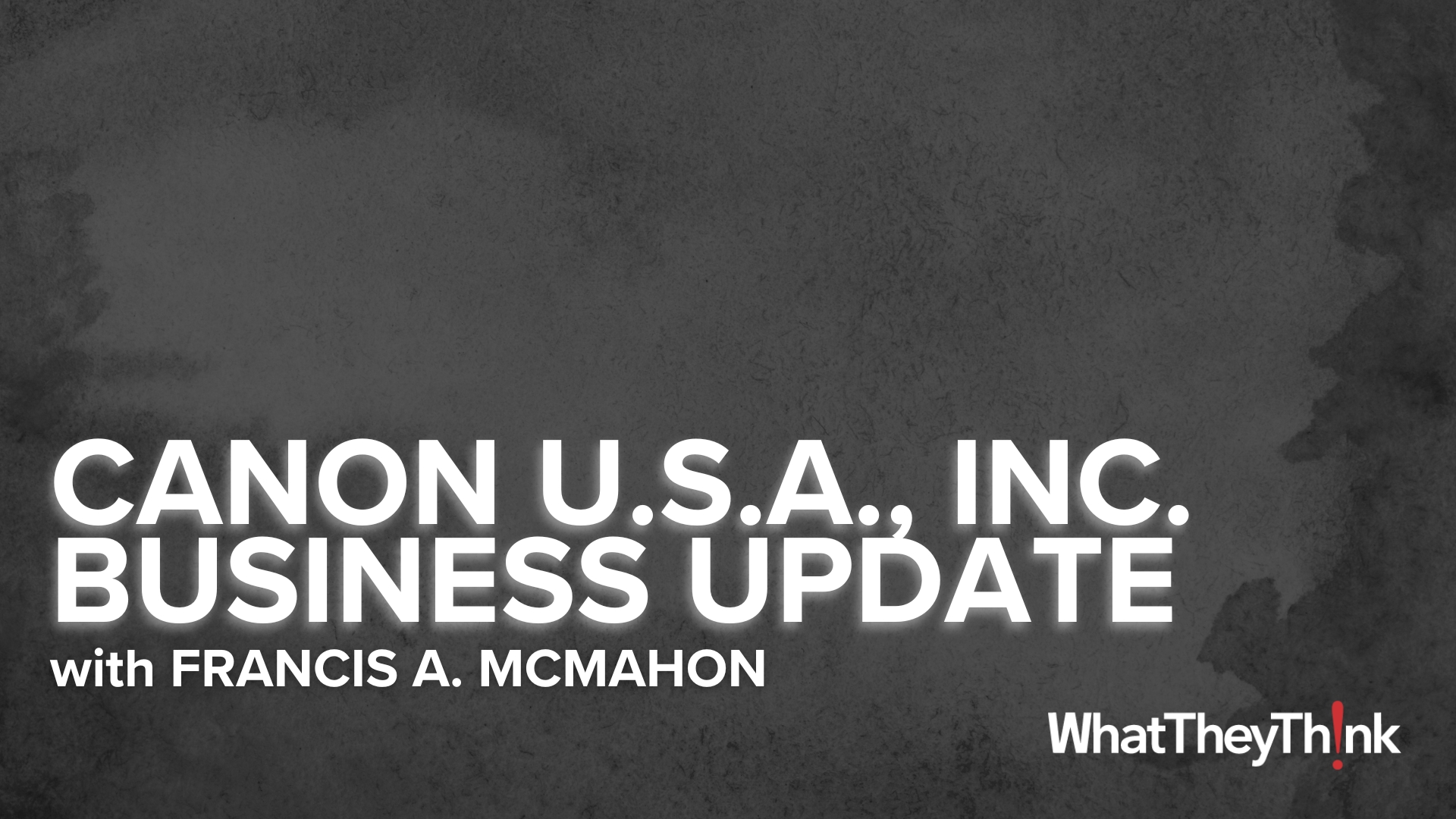Interviewer: Hi, I’m Cary Sherburne, Senior Editor at WhatTheyThink.com and I'm here with Carl Joachim who is Vice President for Marketing for Rico in the Production Group. Welcome.
Carl Joachim: Well thank you, thank you very much.
Interviewer: You guys made an announcement with Cal Poly recently with the Graphic Communications Institute. Tell me a little about that.
Carl Joachim: Well this is an area that I’m really personally very excited about. It’s something that I had a real passion for and something that I kind of drove myself as a personal project. I believe very strongly that Rico needs to have an affiliation with one of the leading academic institutions in the U.S. if we’re going to be a major player for decades to come in the production space. And I believe that for several reasons. If you look at it from the standpoint of what we need to understand as technology continues to move forward, there are many, many sources that you can get market requirements for. You can get them from customers, you can get them from prospects, you can get them internally, but you can also get them from leading academic institutions that focus on the future.
A lot of people don’t realize that when schools like Cal Poly build their curriculum in the graphic communication area specifically, they’re building that curriculum six years before it’s actually delivered. The reason for that six years, obviously, is you have a four-year period of time that the student is in class and they build it six years, they take another check point at two years and of course, the student enters school and that curriculum is somewhat fixed for that four-year period. So, what you end up with when you begin to work with some of the thought leaders that make up the school, the graphic communication group, people under Dr. Levenson’s tutelage, these people are not only very, very aware of how the technology has been used, is currently being used, but they see where it’s going. So, it’s another avenue for us to be able to use to ensure that our products are in lock step, if not ahead really, of where the market’s going.
Another really, really key benefit to this, we think will be our customers, quite frankly. It is our intent as the very first step, once this thing is off the ground; by the way, it already is off the ground. The donation has been made, The **** 900 is in use at school. It is a part of the teaching curriculum today.
Interviewer: Oh, that’s great.
Carl Joachim: So, we’ve been doing this relatively quietly leading up to this announcement. But one of the very first things we want to do that we think will be a huge benefit to our customers is put together a commercial print advisory council, we envision this council to be hand picked. We want to give back to the industry, so to speak, and expose the members of this council to maybe a pure academic side of our industry through a couple of days of interacting with the Cal Poly faculty and then bridge off perhaps to a debate and a discussion about technology in general where Rico can and should go, have an open discussion about it, and I think there’s a real win-win in this, in particular for the customers that are selected that are to be a part of this, and certainly just to hear the debate.
Interviewer: Right.
Carl Joachim: I’m just very, very pleased about what this means for us and when you start taking a look at our commitment to this industry, you really have to look at it over a span of decades, and over the span of the next five, 10, 20 years what we’ll have opportunity to do now is we’ll have an opportunity to influence the young people that go through the school, that will become the leaders of tomorrow, and I think that’s a very important service that we provide our society quite frankly.
Interviewer: Do you think you’ll have an impact on the curriculum s well?
Carl Joachim: Well, right now there is an impact in a sense that there is a new mid range digital press, piece of technology from Rico that they didn’t have before. And so already, they’re beginning to build their curriculum around this course and they’re philosophy is, learn by doing. So, not only will our technology be part of the curriculum, but the students will actually spend time in a hands-on environment. They have live applications that they are currently letting students run. For example, they’re entire football program. All the literature that goes along with putting together a football calendar, all of the rosters, etc., etc. all of that is being done on campus today by the C900. So, it’s already having an impact I think and I think over time it will be greater.
Interviewer: That’s great. Now, I’d like to – in our next segment, I’d like to talk a little bit more about this relationship. So, let’s get back together soon.
Carl Joachim: Sure. Sounds good.

 Official camera partner of WhatTheyThink and the drupa daily.
Official camera partner of WhatTheyThink and the drupa daily. 











